Every day, self-management in companies and organizations is no longer a mystery and is starting to be discussed in corridors and offices. Many yearn for it, while others say it is impossible. With this article, we hope to explain basic concepts about self-management and dispel some misinterpretations.
In this article, you will find:
- Definition
- Advantages and disadvantages
- Examples
- Myths about self-management
- How you can self manage in the workplace
- Self organized structures
- Doubts and frequently asked questions
- Invitation
Definition of self-management and horizontal management
When we talk about self-management in companies and organizations, it is common for similar terms to appear , to bring clarity and avoid confusion, we will differentiate:
Horizontal Management
A set of organizational practices that opposes hierarchical chain of command structure, and hopes to end it without proposing a substitute structure. It would be the equivalent of eliminating managerial positions and the directors in a company, placing everyone in the organization as having the same authority and decision-making power.
Self Management
A set of organizational practices that seek to distribute authority, giving clarity of responsibilities and maximum autonomy to each member of the organization. In this scenario, people aren’t required to report to a superior, but instead follow a set of rules and agreements made collectively. These agreements form an organizational structure, which doesn’t require everyone to have the same decision-making power and authority. Instead, it makes it clear how this is done and prevents the boss-subordinate relationship.
Advantages and Disadvantages of Self-Management
We have compiled the principle advantages and disadvantages identified by different researchers and here is what we came up with:
Better Performance
In a study by Ernst and Young, a self-managed organization called Buurtzorg that works in the service of home care was compared with other traditionally managed organizations that work in the same segment and region. The result showed that self-management, in this case, decreases the recovery time of treated patients by an average of 40%, below market cost.
More Engagement
Buurtzorg is continually voted the best organization to work for (organizations with more than 1000 people) in the Netherlands. According to the Harvard Business Review, a Morning Star, a self-managed tomato processing company, makes its temporary employees feel as if they were owners and just as engaged as the actual directors and executives of other companies.
Greater Adaptability
For an organization to adapt to the needs of an ever-changing environment, it needs to make quick decisions. In a survey conducted by the Washington State Department of Technology, the time taken, during a meeting, to resolve a problem and make a decision has dropped 93% after adopting self-management practices.
The Transition isn’t Simple
The biggest disadvantage of self-management is the time and energy needed to promote the transition. People and organizations are used to operating by the chain of command, it takes more than a workshop or application to change things. The larger the organization, the more difficult the transition is.
Examples of Self-Managed Companies
Self-management is not so new, which is great because we have many examples that we can study and be inspired by. See the table below with some examples that show the variety of sectors and sizes of companies, where self-management has proven already to be successful:

| Name | Sector | Size (# of people) |
| FAVI | Auto Parts | 500 |
| Morning Star | Food Industry | 400 a 2400* |
| Menlo Technologies | Software Development | 144 |
| Precision Nutrition | Nutrition Coaching and Education | 55 |
| Vagas | Recruitment and Selection | 250 |
| W.L. Gore | Apparel and Textiles Industry | 10.200 |
| Mattblack Systems | Aeronautical Technology | 40 |
| Sun Hydraulics | Hydraulic parts | 900 |
| Zappos | Online Retail | 1.600 |
| Blinkist | Startup Services | 38 |
| Buurtzorg | Nursing and Home Care | 9.400 |
| Semco | Industrial Equipment | 1.150 |
*depends on the season
Myths about Self-Management
What comes to your mind when you hear the word self-management, horizontal management or distributed management? Part of our work at Target Teal is to demystify these terms and ward off and phantoms, so that organizations, considering this path, can have more peace of mind initiating the transition processes. Here we have chosen some phrases that, although are widely used, are far from what we believe to be true about self-management.
There are no leaders in self-management
We stopped associating leadership with a position or function and started seeing that in each situation different leaders can emerge. This fluid nature of leadership for some may generate insecurity, but it validates what already exists naturally in social groups, leaving aside the hypocrisy of senior management positions, which are presumably occupied by highly trained leaders. In short, self-management creates the space for everyone to lead and follow, depending on the moment or challenge to be faced.
In self-management decisions take long
Here there is a considerable difference between what exists in people’s imagination and what we practice and teach. Have you ever experienced endless meetings just to be able to get to consensus? Or what about those big assemblies where people vote? We don’t work like that and definitely don’t propose anything like that. The self-management practices we use and suggest in our workshops and consultancy work take an opposite approach. We believe in agile management, and encourage that many small decisions be made autonomously by many people. When a group (maximum 15) needs to decide something together, we don’t expect everyone to agree to the proposal, but rather consider it safe enough to try. These are practices that delegate a lot of authority and let real and practical experience be the main judge of the effectiveness of a solution.
In self-management there are no rules, metrics and structure
When working in an hierarchical organization, we know that there is an important rule, if not the only rule. “Do what your boss says!” In self-management you need to operate following a much greater number of rules and principles, which apply to everyone. Structure and clarity of responsibilities are also two important attributes. Numbers, whether financial or that show a certain result or the efficiency of a process, are also not abolished. What exists is a reframing and readjustment of metrics that are no longer at the service of “command and control” but instead help everyone understand a complex reality and learn about the impact of decisions made.

Without clear agreements on power, pseudo-egalitarian groups collapse in a swamp of inaction or are commanded by campaigning in the shadows.
A team needs to be mature before being self-managed
Self-management is the best, if not the only way for a team to mature and become ready for self-management. If you keep treating your team like irresponsible children or teenagers, so-called maturity will never take effect. Read this post that explains in more detail our position on the subject.
In self-management everyone is equal
When we talk about self-management we are not talking about an egalitarian utopia or equal power for all. We do not argue or defend that all ideas and suggestions have the same value or that one person cannot have the authority to decide something that affects another. We recognize that people have different skills, experiences, passions and levels of resilience in specific contexts. We advocate equivalence in the definition and application of rules and principles, as well as a balanced and transparent distribution of authority.
People don’t want responsibility or autonomy
Perhaps there is an ounce of truth in the title above. After all, we have been conditioned by our society and culture to transfer a good part of our responsibilities to other people. “We transfer the responsibility for taking care of our safety and health to the government. We transfer to teachers and parents the responsibility to educate us. We transfer the responsibility of dealing with conflicts and managing our own work to the boss.”
However, people do want autonomy and yearn for more freedom to create work. They also want to reap the rewards of a job well done. As such, we arrived at this triad: Responsibility, autonomy and reward for work. We cannot offer alone the first two items of this trio and consider it a fair offer. When inviting people to engage in self-management, take this into account, especially when they feel wronged for the way they are being rewarded. Even if for you, this is unfounded.
All of this is still very experimental
In recent years, a lot has happened in this field. Books, frameworks, case studies and practices. And a lot is yet to come, but we must recognize the pioneers, organizations that started their work in the 60s, 70s and 80s. Organizations like WL Gore and Morning Star had to innovate a lot to be pioneers. Today you can take advantage of what has already been done and copy without doing it blindly. You can take advantage of established standards and practices that may work in your organization. It will always be necessary to experiment and adapt, but the path taken by others makes the process that much easier.
How to implement self-management in a company
Introducing or adopting self-management in an organization is not just “empowering everyone”, saying “now you have autonomy!” or creating a “horizontal environment” where everyone is considered equal.
This can work when you have a team of up to 5 people. But what if there are 50? Or 9000 nurses, like at Buurtzorg? In that case you will need to put in place a little more structure. This structure helps to distribute authority and streamline decision-making processes.
The smaller the company or organization, the easier it will be to adopt self-management practices, so don’t wait for your company to grow in size.
Overall, we believe that the best way for a pre existing organization to adopt self-management is:
- Someone with institutional power decides to experiment or adopt self-management practices. If you are not a director, CEO or president, seek an ally with this type of power and influence, after all the starting point is hierarchy.
- Involve other people in the organization through workshops, study groups and even by hiring specialized consultants, enabling the organization to gain capacity so things start to change.
- Structures, habits, culture and practices start to change slowly, requiring continuous effort from those involved.
- After a period that can vary from a few months to a few years, self-management is consolidated and incorporated into the organization’s culture.
If you are starting an organization ou want to start a journey towards self-management, it is important to study and understand what has already been done, without falling into the trap of reinventing the wheel Se você está começando uma organização ou pretende começar a To find out more, participate in one of our courses and workshops.
The structures of self-managed organizations
During his detailed research in the book Reinventing Organizations, Frederic Laloux discovered 3 different types of structures that allow self-management to occur, even in larger organizations. These structures were developed in practice by companies and organizations and later were described by Laloux. Alert: We do not recommend that you copy a template.
They are:
- Parallel Autonomous Teams
- Network Individual Agreements
- Nested Circles
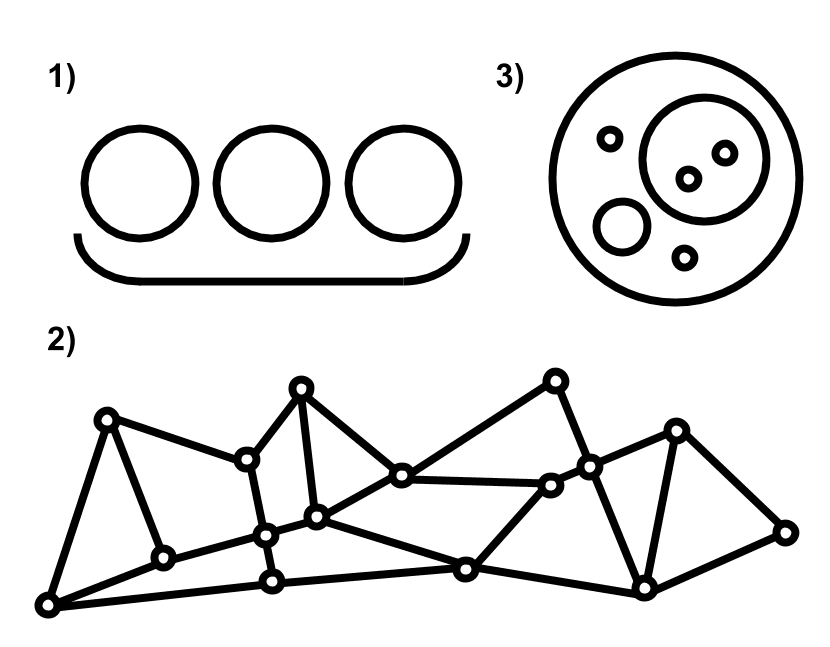
Let’s understand them better and how each type of structure fits different contexts.
Parallel autonomous teams (PAT)
This type of structure emerged when the number of people needed for the organization to deliver value from end to end was small. Let’s look at an example mentioned above.
Buurtzorg, a Dutch home care and nursing organization, operates using autonomous teams of up to 12 nurses who care for about 50 patients, located in the same neighborhood. They carry out all the work that generates value, including planning, scheduling visits, coordinating, purchasing, contracting and number of services and customer service (on the phone). There is no call center that centralizes calls! Oh, and teams don’t have a “leader” or “manager”.

During the training period of these teams, specialized coaches teach people to work in a self-organized way. Nurses are trained in facilitation, mediation and conflict resolution techniques. In addition to more than 700 teams, there are 35 people who carry out administrative and legal work (backoffice). Other than that, little coordination is needed between the teams.
This self-management framework is often used in the service sector or in organizations with a very short value chain. That way it is possible to keep teams small and independent. Note that one team does not depend on the other to generate value, so this type of structure works.
Summary – Parallel autonomous teams (PAT)
Applicability: Small or large organizations with a short and replicable value chain. It works well in the service sector.
Common practices: Structured meetings with facilitation; An integration process for new employees; A Book with principles and rules; A Counseling process; Mentors without responsibility for team performance.
Advantages and disadvantages: Easily replicable and scalable; Few rules are needed; You may need a support team; Depending on the case, you may depend on a strong culture to support yourself.
Examples and cases: Buurtzorg, Valve, RHD, FAVI
Individual Agreements Network (IAN)
The Individual Agreements Network was created by Morning Star, an American tomato processor. Responsible for producing 40% of the tomato sauce consumed on the American East Coast, Morning Star has been operating with this structure since 1990.
The Morning Star process ranges from planting tomatoes to processing and distribution. The value chain is extremely long, requiring the work of hundreds of people, in order for the tomato to reach the customer. In this scenario, the parallel autonomous teams model would certainly not work.
Rather than defining a departmental and hierarchical structure, Morning Star employees establish “contracts” with each other that determine responsibilities, agreements and production goals. They are called LOUCs. This peer-to-peer process creates an accountability network that is not centered on one person or a chain of command. In addition, there are no managers or supervisors at Morning Star, after all we are talking about self-management.
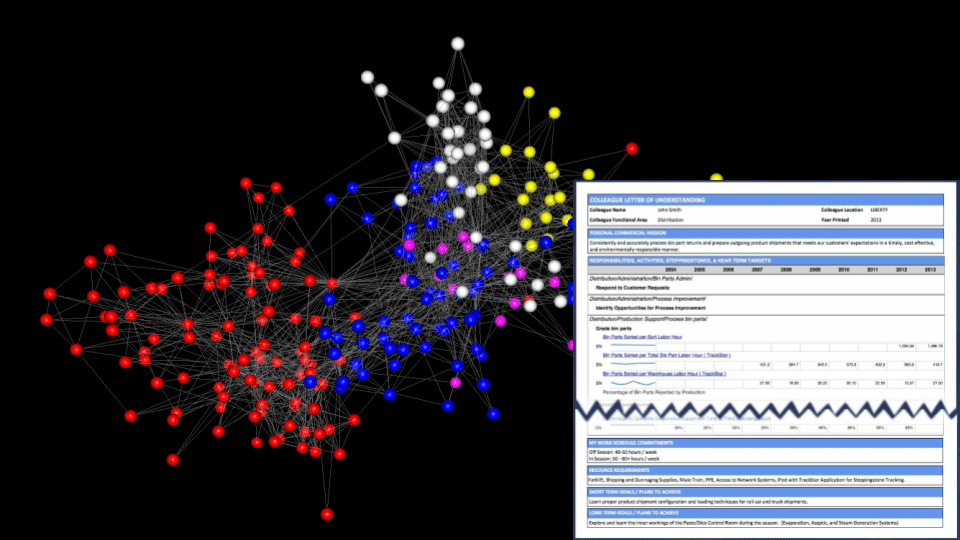
Morning Star Contract Network and an example of a contract signed between two colleagues.
Another social technology normally present in organizations that operate in an IAN is the Counseling Process. This process says that anyone in the organization can make any decision (including buying a $ 100,000 machine), as long as they listen to the “advice” from all those impacted or knowledgeable to contribute.
It is not necessary to “integrate” all opinions, but it is necessary to listen to them.
Among the disadvantages of this type practise is the fact that it does not provide a mechanism for structural changes. It is generally more suitable for organizations that do not undergo so many changes in the supply chain and production process.
Summary – Network of Individual Agreements (IAN)
Applicability: Medium and large organizations with long value chains, and which undergo few major changes is considered a stable context.
Common practices: A function structure with clearly defined activities; LOUC – Letter of Understanding between Colleagues; Onboarding process and management training; A book with principles and rules; Self-defined wages with peer calibration; Counseling process; Formal multi-stage process for conflict resolution.
Advantages and disadvantages: low adaptability; It does not require teams; few tests done.
Examples and cases: Morning Star
Nested Circles (NC)
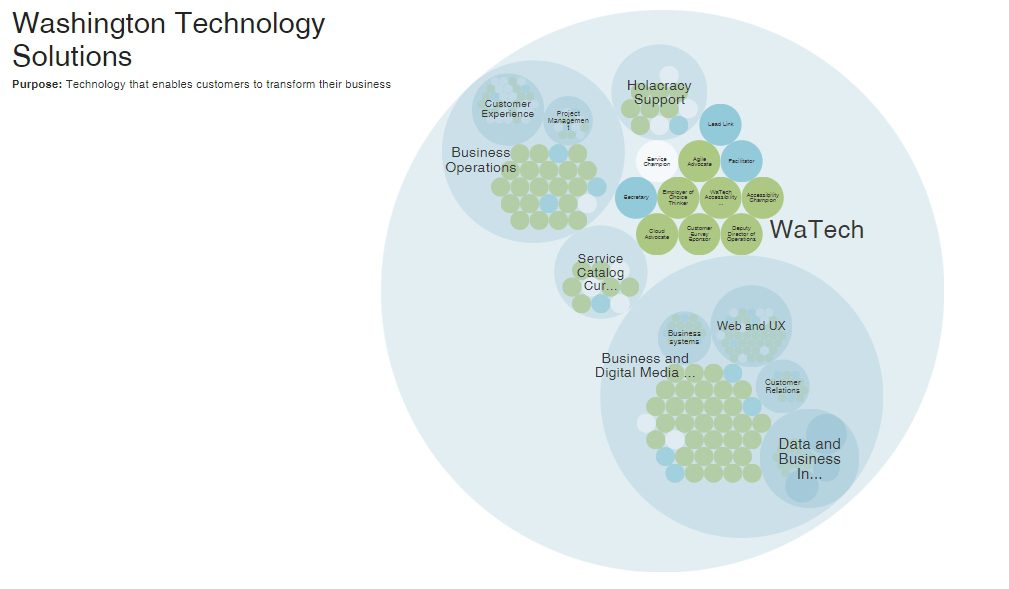
The most flexible and adaptable structure described by Laloux is that of Nested Circles. Because it is more robust, and it can be used in sectors where there is a long, complex and dynamic value chain. The NC structure is formed by circles that are subdivided into roles and other internal circles. There are linking roles that connect the layers and create an explicit communication channel between the inner and outer circle.
Does it look like the hierarchical structure? Yes, there is a “hierarchy of circles”. But this is a hierarchy of scope based on work (roles and circles), not of positions and people. In addition, there are rules that prevent external circles from interfering with the functioning of internal circles, ensuring self-management throughout the organization.
There are some social technologies that facilitate the process of implementing a Nested Circle structure in your organization. Holacracy, Sociocracy 3.0 and O2 – Organic Organizations are examples. Understand that these technologies act as catalysts for a broad and deep transition to self-management. They are not formulas or recipes.
The great advantage of this type of structure is its versatility, and even if you choose another path, learning the practices that are used here, can be useful in other scenarios and contexts.
Zappos, the American shoe giant, was one of the largest companies to adopt a nested circle structure so far, but there are organizations of all sizes and sectors, including two in the public sector.
Summary – Nested Circles (NC)
Applicability: Organizations of all sizes with long value chains and which undergo many changes due to a dynamic context.
Common practices: Fluid role structure; Governance records continuously updated by meetings using an Integrative Decision-Making Process; Regular and structured meetings to generate transparency; A book with principles and rules; Social frameworks and technologies to facilitate adoption such as Holacracia, S3 and O2.
Advantages and disadvantages: Very adaptable; Structure with more rules; You need linking roles (double links); Learning this, the others are simplifications of this.
Examples and cases: Zappos, WaTech, Blinkist, Target Teal.
Doubts and frequently asked questions about self-management
When working with our clients or giving workshops on the topic, it is common for people to have questions about how certain practices, processes and habits are or happen in a self-managed environment. Below is a list of the most common and links to other articles that seek to provide an answer or simply deeper insight.
How are salaries in self-management?
This is usually a taboo subject in many companies. In self-management, people gain more voice and end up bringing up their dissatisfactions on the subject. Then there are opportunities to talk about it and correct injustices. In this article we talk a little bit about why this subject is taboo and how to treat it better.
How do I advance in my career if I don’t have a hierarchical structure for me to move up to?
Instead of one career path, there are multiply paths to advance one’s career in self-management. Want to find out more? Read this account of someone who is already living this reality.
Who defines the strategy in a self-managed organization?
Strategy still exists in self-management, however, we change the way we think and act strategically. This article on strategy in the VUCA world provides good ideas on how this is done.
How do people deal with conflicts without a boss to mediate?
The organization needs to invest in training and programs to enable people to deal with conflicts (this is nothing new). However, to be clear, this is not to say that self-management increases the number of conflicts, in fact, it is quite the opposite. We find that work environments tend to have less drama and be more easy going.
Who sets goals and who performs performance evaluation in a company where there are no bosses?
These are two important points that deserve a more in depth look. Here’s an article about how goals may not be a good practice. And here read more about how to do performance evaluations (joke).
Invitation
In self-management, commitments between co-workers replace hierarchical relationships. With this comes the opportunity to create more humane and purpose-oriented organizations. We hope that this article has shed some light on the subject and brought more clarity. If you have any questions or want to bring forward another perspective, I invite you to leave a message for us in the comments below.
If you, like us at Target Teal, believe this is the way to go and need some help, let’s talk.
Translated by Tanya Stergiou


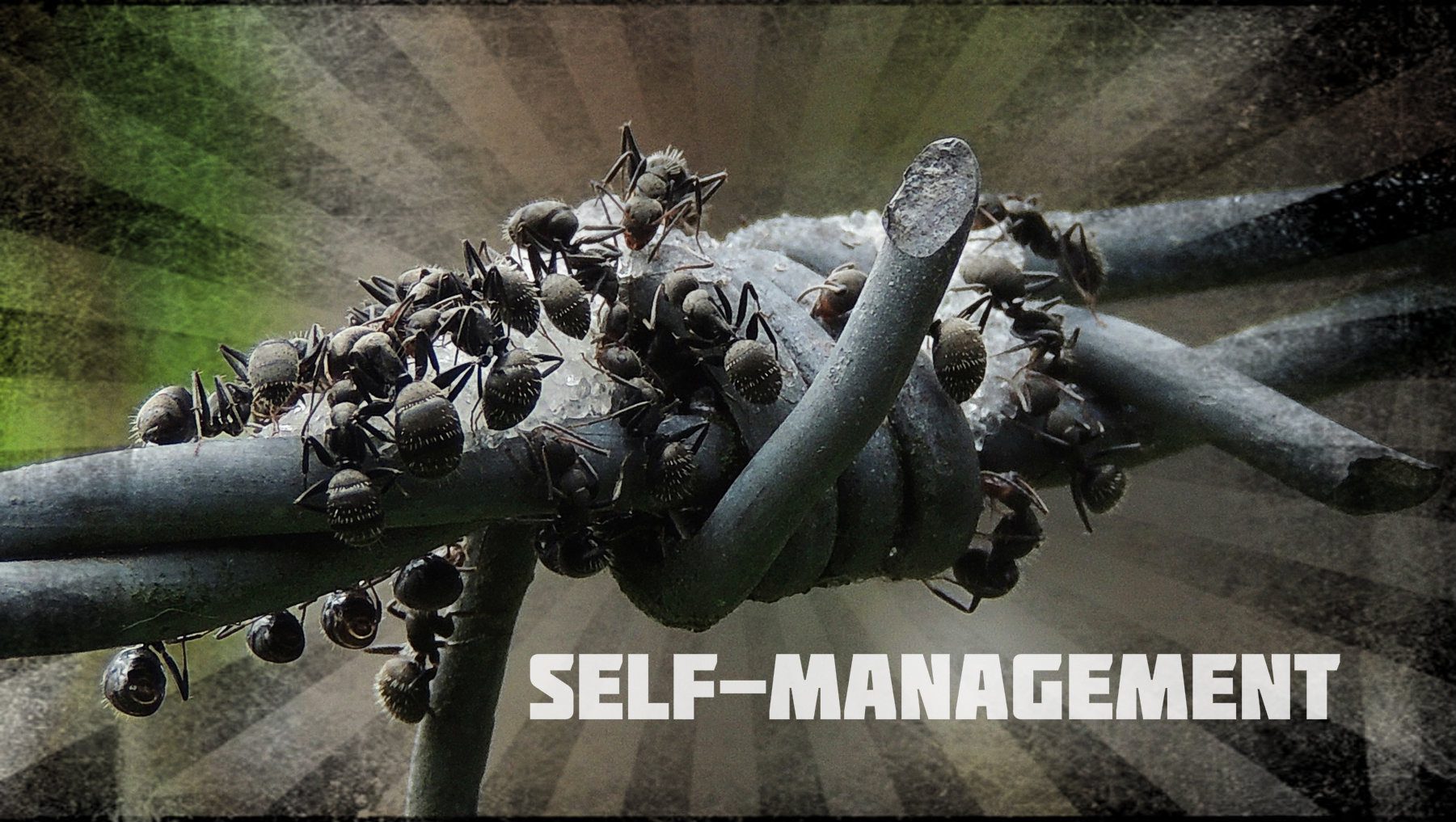
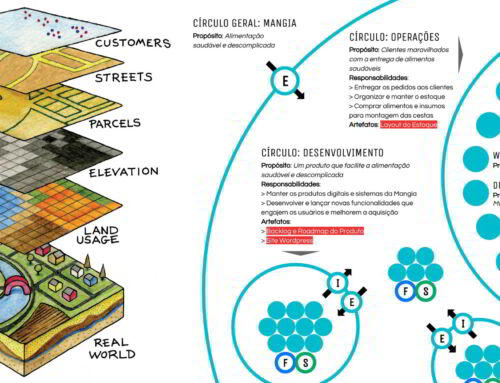


[…] was wrong. Every time I was asked what level of maturity is needed to work in a self-managed company I would […]
[…] At Target Teal, we usually differentiate the terms horizontal management and self-management. […]
[…] the first steps towards the evolution of the organizational structure and perhaps the adoption of self-management practices is to explain how things work. But this is not an easy task. In general, I find it very […]
[…] intensive O2 workshops, we usually reserve a session to talk about “anti-patterns” for self-management. These “anti-patterns” are common solutions to certain problems, which instead of solving them, […]
Nice blog. Thank you for the sharing.
Key Account Consultant
[…] your organization is shifting into self-management, you may find yourself going through a transition from manager to systems thinker. The most common […]
[…] Target Teal we are avid promoters of self-management, that is, of mechanisms that allow an organizational design that provides autonomy as a pattern, […]